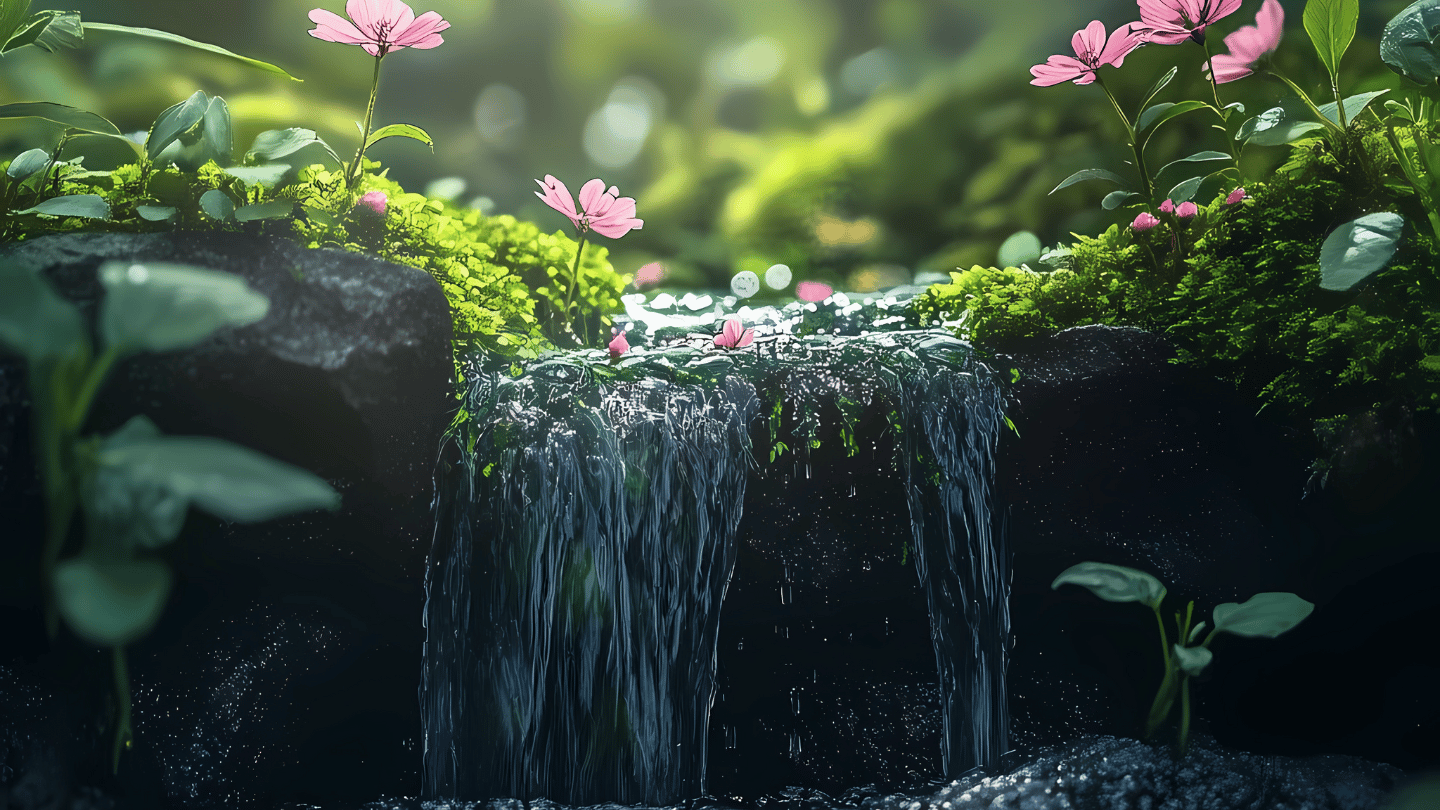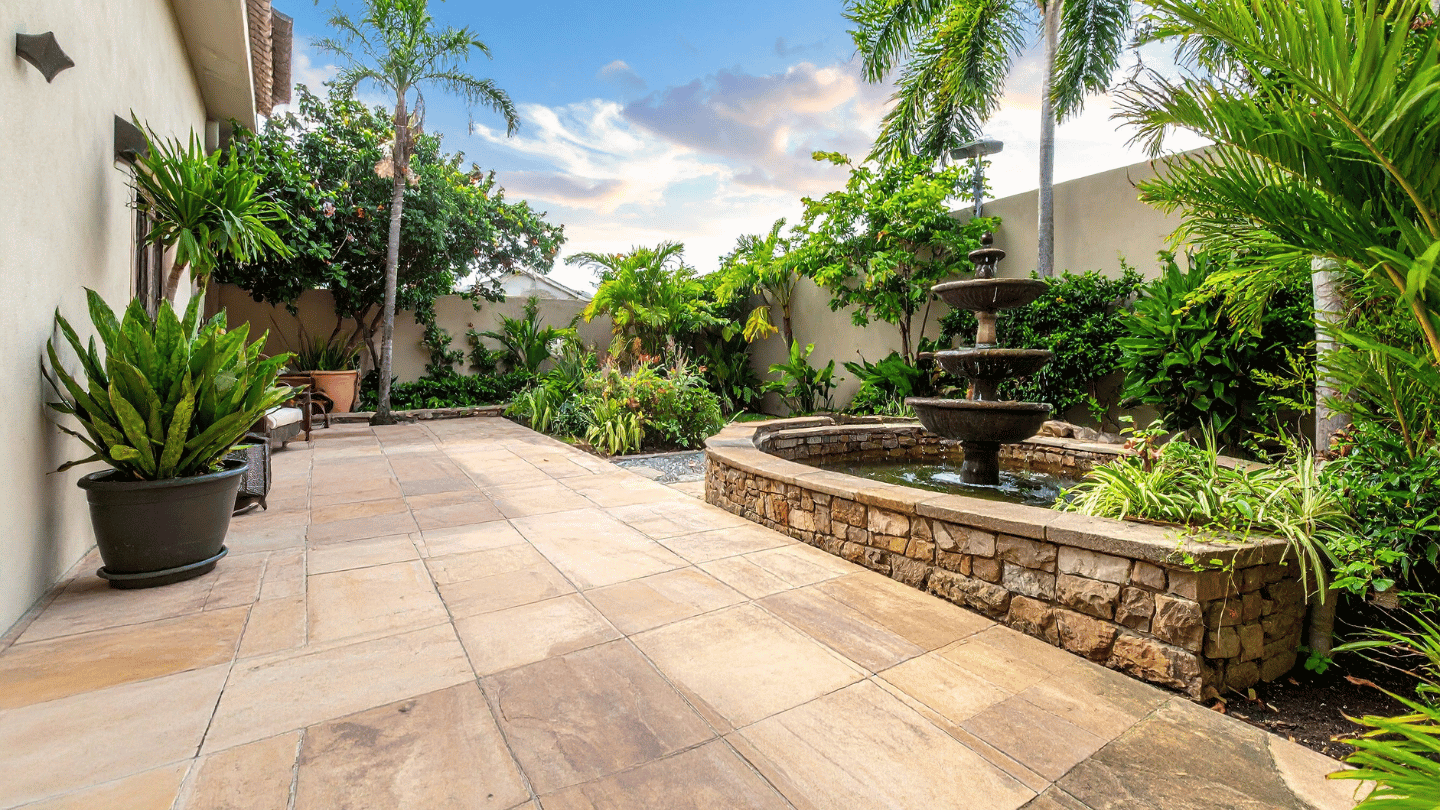You've got 400 square feet of yard space wedged between your house and the neighbor's fence. Maybe a narrow side yard that's mostly pavers. And you're thinking, "There's no way I can have water out here."
Here's the thing: you absolutely can. We've built pondless waterfalls in courtyards barely wider than a hallway, tucked into corners that previously held nothing but a forgotten potted plant and a coiled hose. The secret isn't finding more space—it's working with what you've got in a smarter way.
A pondless waterfall is exactly what it sounds like: water spills over rocks, disappears into a hidden underground reservoir, and gets pumped back to the top. No pond sitting on the surface. No standing water collecting leaves. Just the movement and sound of flowing water in a footprint that can be as small as 3x4 feet. We've installed them against walls, built them into planter beds, and even tucked them next to outdoor dining areas where the sound of trickling water covers up traffic noise from the street.
For Los Angeles yards specifically, this setup makes sense on multiple levels. You're not maintaining a pond in 95-degree heat, so you won't be out there every other day fishing out debris or worrying about evaporation. The system recirculates the same water, which means you're just topping off the reservoir once a week during summer—maybe a few gallons, not hundreds. If you're already working with drought-tolerant landscaping (and most of you are), a pondless waterfall fits right in. Pair it with natives like California fescue or manzanita, or go full desert modern with agave and decomposed granite. Either way, you're adding the sensory experience of water without the thirsty maintenance of a traditional pond.
The design flexibility is where these really shine. We recently finished one in a Silver Lake courtyard—literally 6 feet wide—where we stacked local boulders vertically along an existing stucco wall and let water cascade down into a gravel bed. Planted sword ferns and Japanese forest grass around the base. The whole thing took up maybe 15 square feet of floor space but completely changed how that courtyard felt. Another client in Pasadena wanted something sleeker, so we used cut bluestone in horizontal layers with linear LED strips underneath. Same concept, totally different vibe. The point is, you're not locked into one aesthetic. If your house is Spanish revival, we can make it look like a natural spring. If it's mid-century, we'll keep it clean and geometric.
Maintenance is lighter than you'd expect. No fish, no biological filtration, and no algae blooms to manage. You'll want to check the reservoir level every week or so when it's hot or windy—LA's dry air pulls moisture faster than you'd think. Skim out any leaves that land in the streambed before they break down. Clean the pump filter two or three times a year, which takes about ten minutes with a garden hose. That's it for regular upkeep. We recommend a professional tune-up in spring to make sure everything's running smoothly before summer and another in fall if you want to dial things back for the cooler months (though plenty of clients run theirs year-round).
Even if your yard feels too small, too awkward, or too boring to do anything interesting with, a pondless waterfall changes the equation. You get movement. You get sound that actually masks the neighbor's wind chimes or the delivery trucks on the next block over. And you get a focal point that doesn't demand a landscaping overhaul or a complete redesign of your outdoor space. Just water doing what it does best—making everything feel a little calmer, a little cooler, a little more worth sitting outside for.

.png)



.jpg)





.jpg)